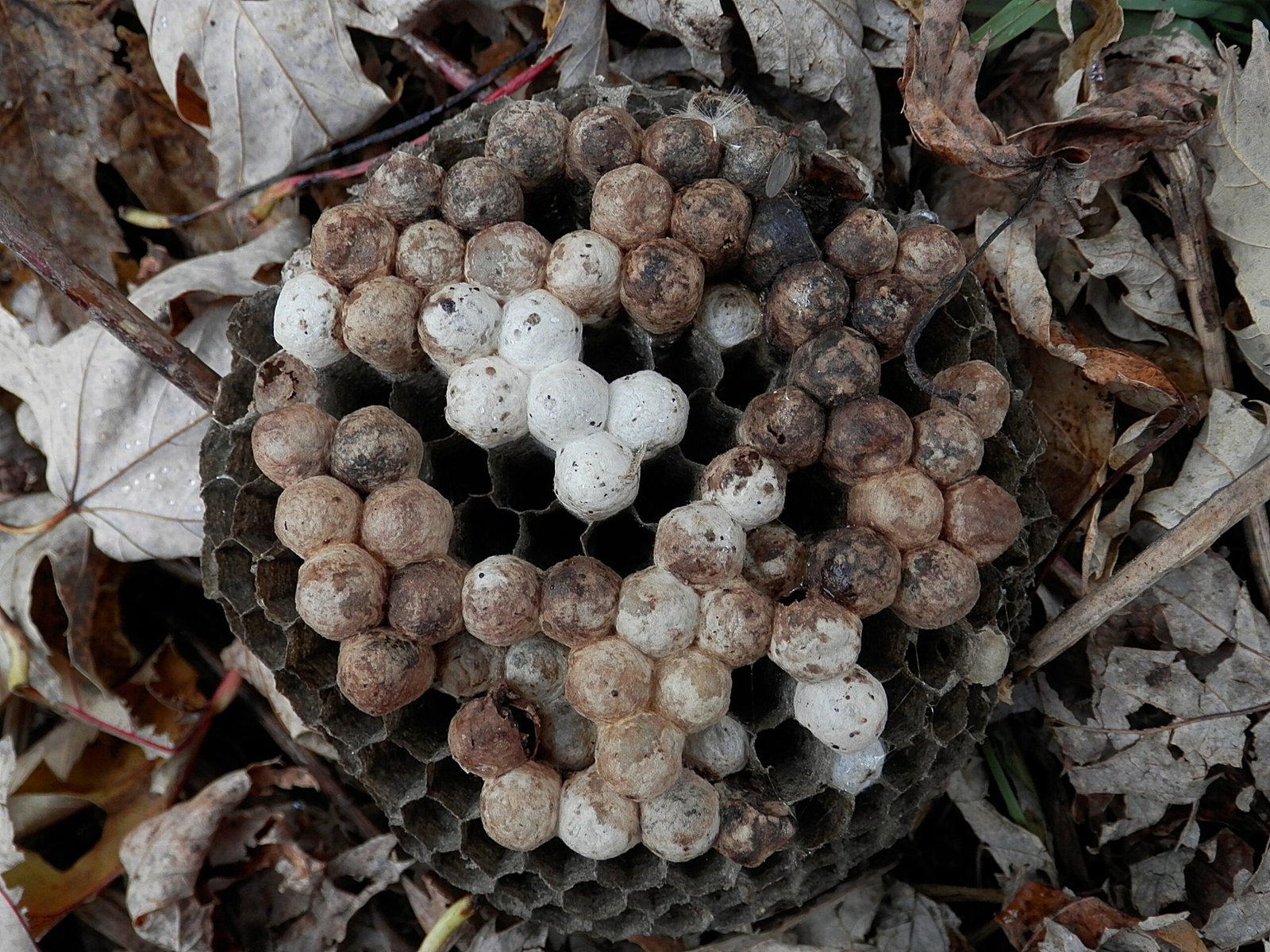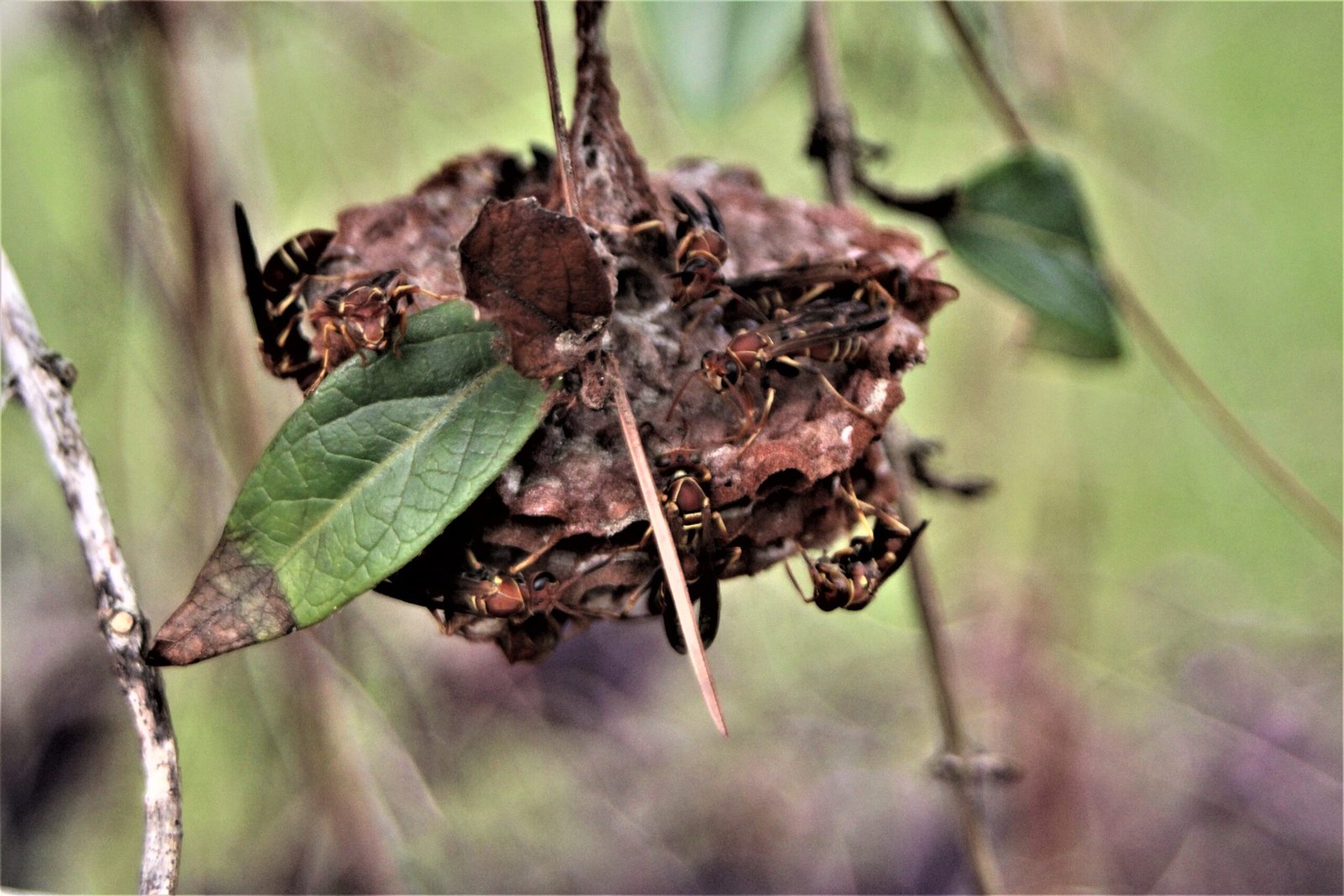Imagine walking through a quiet garden and spotting a mysterious grayish structure clinging to a tree branch—a wasp nest. It looks fragile and papery, yet it withstands wind, rain, and predators. Have you ever wondered how such tiny creatures become master architects, crafting their own building materials from scratch? The secret world of wasp construction is a story of ingenuity, transformation, and survival, blending nature’s chemistry and engineering in a way that rivals human invention. Let’s peel back the layers and marvel at the astonishing craft of wasp paper makers.
The Ingenious Architects of Nature
Wasps are not just insects with a painful sting; they are nature’s builders, using remarkable skills to create intricate homes. Social wasps, like yellowjackets and paper wasps, work together in colonies to build nests that can house hundreds, sometimes thousands, of individuals. Their nests are not random piles of debris but carefully planned structures with individual cells and chambers for eggs, larvae, and food storage. Each wasp plays a role, from gathering materials to shaping the nest, showcasing a level of teamwork and coordination that is both surprising and inspiring. Their architectural prowess is a testament to millions of years of evolution and adaptation. Through trial and error, wasps have perfected the art of home construction, often surpassing what we might expect from such small creatures.
The Science Behind Paper Making

The secret to wasps’ construction prowess lies in their ability to create paper—yes, real paper! Unlike humans who rely on factories and machines, wasps use their own bodies as tools. They chew up wood fibers from fences, trees, or even cardboard, mixing them with saliva to form a soft, pulpy material. This natural blend is then spread and shaped into thin sheets, layer by layer, eventually hardening into the recognizable papery walls of a nest. The process mirrors early human papermaking, but on a miniature, organic scale. The chemistry involved is surprisingly sophisticated, with enzymes in the wasps’ saliva breaking down the wood and helping bind the fibers together. This innovation allows wasps to turn raw, rigid wood into a flexible, weather-resistant building material.
Choosing the Perfect Building Site

Selecting a location for a nest is a crucial decision that can mean the difference between safety and disaster. Wasps carefully scout for spots that offer shelter from rain and wind, as well as protection from predators. You might find their nests under eaves, inside hollow trees, or tucked away in shrubs. Some species even build underground, using abandoned rodent burrows as a starting point. The chosen site influences the size and shape of the nest, with exposed locations demanding thicker walls and more reinforcement. The process of site selection is a fascinating blend of instinct and environmental assessment. Wasps seem to “know” where threats might lurk, avoiding places with frequent human activity or obvious dangers. This careful planning ensures the colony’s survival and success.
The Step-by-Step Nest Construction Process

Wasp nest building is a step-by-step process that begins with a single female—the foundress—who lays the first foundation. She scrapes wood fibers, mixes them with saliva, and shapes the initial stalk or “petiole.” This tiny stem attaches to the chosen surface and supports the first paper cell, where the first eggs are laid. As her offspring hatch and grow, they join in the building effort, rapidly expanding the nest. Each new cell is crafted with precision, shaped into a perfect hexagon to maximize space and strength. The nest grows outward in layers, creating a multi-chambered masterpiece. Throughout the season, the colony adjusts construction based on weather, colony size, and available resources, demonstrating remarkable flexibility and problem-solving.
Mastering Material Strength and Flexibility

The “paper” wasps produce might look delicate, but it is far stronger than it seems. The secret lies in the way the wood fibers are aligned and compressed, similar to how plywood gets its strength. This construction allows the nest to flex with wind and temperature changes, resisting cracks and tears. Wasps instinctively know how thick to make each layer, balancing protection with breathability. Some species add extra layers for insulation or waterproofing, especially in colder or wetter climates. The end result is a structure that is lightweight yet impressively durable, able to last through storms and attacks. This mastery of material science is an incredible feat for an insect with no formal “training”—just natural instinct and evolutionary wisdom.
The Role of Saliva: Nature’s Glue
Wasps’ saliva is not just a wetting agent—it’s a powerful glue that holds their nests together. Packed with enzymes and sticky proteins, it helps dissolve wood fibers and binds them into a cohesive sheet. The glue hardens as it dries, locking the fibers in place and preventing the nest from falling apart. This natural adhesive is so effective that scientists have studied it for clues on designing better, eco-friendly glues for human use. In fact, the unique properties of wasp saliva allow the nest to remain flexible and strong, even as it ages. It’s another example of how nature solves complex engineering problems with simple, elegant solutions.
Division of Labor: Teamwork Makes the Dream Work
In a wasp colony, everyone has a job. Some wasps specialize in foraging for wood, others guard the nest, while some focus on caring for young. This division of labor ensures that the nest is built quickly and maintained efficiently. Worker wasps communicate through touch and chemical signals, coordinating their activities without spoken language. When danger threatens, guards alert the colony, and all construction halts while the nest is defended. The level of cooperation and organization rivals that of human construction crews—except wasps don’t need blueprints or supervisors. Their innate sense of teamwork is vital for both survival and success, and watching them work together is nothing short of mesmerizing.
Adapting to the Environment
Wasps are masters of adaptation, adjusting their building methods to suit their environment. In hot, dry areas, they construct nests with thinner walls to allow ventilation and prevent overheating. In colder climates, nests are insulated with extra layers to keep the young warm. Some tropical species build exposed nests, while others hide in cavities to avoid extreme weather and predators. Wasps even learn to use new materials, such as man-made paper or cardboard, when natural wood is scarce. These adaptations not only highlight the wasps’ intelligence but also their resilience in a changing world. Their ability to innovate and adjust is a key reason for their success across diverse habitats.
Defending the Fortress

The nest is more than just a home—it’s a fortress that must be protected at all costs. Wasps defend their nests fiercely, using powerful stings and coordinated attacks to drive away invaders. The design of the nest itself helps with defense: narrow entrances make it hard for predators to invade, and the papery walls can be quickly repaired if damaged. Alarm pheromones spread quickly through the colony, triggering an immediate defensive response. Some species even build fake entrances or add confusing twists and turns to the nest layout, making it harder for enemies to find the brood. This combination of physical and chemical defense ensures the safety of the next generation.
Wasp Paper in Human Innovation

Humans have long been inspired by the humble wasp nest. Early papermakers studied wasps to learn how to turn plant material into paper, leading to the development of our own paper industry. Today, researchers are still fascinated by the strength and sustainability of wasp paper. There is ongoing research into biomimicry—designing new materials and adhesives based on wasp nest chemistry. Some eco-friendly packaging and construction materials are inspired by the way wasps build lightweight, sturdy structures from natural fibers. The story of wasp paper makers is a reminder that nature often holds the blueprint for our greatest inventions.
A Marvel of Natural Engineering
Wasp nests are not just homes—they are marvels of engineering, chemistry, and teamwork. Each nest tells a story of survival, adaptation, and ingenuity. From the careful choice of building materials to the sophisticated use of saliva as glue, wasps demonstrate a level of craftsmanship that continues to astonish scientists and nature lovers alike. Their ability to create strong, flexible, and sustainable structures from nothing but raw wood and instinct is a triumph of evolution. The next time you see a wasp nest, take a moment to marvel at the tiny architects who built it and consider what other secrets nature might hold, waiting to inspire us.



